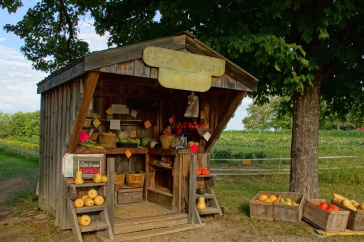
N.H. Population Change from 2000 to 2018.
The Granite State continues to depend on migration for most of its population growth, and the state is becoming more racially diverse, according to new research from the New Hampshire Agricultural Experiment Station and the Carsey School of Public Policy at the University of New Hampshire.
Population growth recently has started to increase after a decline during the recession and its aftermath. The state’s population grew by more than 7,000 annually between 2016 and 2018, and most of the gain resulted from more people moving to the state from other parts of the country. Immigration also contributed to the gain. In contrast, the excess of births over deaths has diminished so much that its contribution to population gain is now minimal.
Among the key findings:
- Population gains have diminished, though growth has recently increased.
- Migration is the biggest driver of population change.
- Demographic change is uneven across the state.
- NH’s population is aging.
- NH is becoming more racially diverse, particularly among children.
“Migration is important to New Hampshire’s future because it brings in younger people of working age at a time when the state’s workforce is aging,” said Kenneth Johnson, professor of sociology and senior demographer. “In-migrants to the state have been better educated than those leaving and that has resulted in an increase to the state’s store of intellectual capital.”
While New Hampshire is often characterized as a state where residents’ lineage goes back generations, Johnson said that it is one of the most mobile populations in the country. Only 42 percent of the state residents were born in New Hampshire, far less than for New England (58 percent) or the United States (59 percent).
“The future economic and social well-being of New Hampshire communities depends on their ability to anticipate change and respond appropriately,” Johnson said. “This analysis of how the state’s population is growing and changing can help to inform policy and contribute to the efforts of policymakers, nonprofits and businesses to consider the future needs of the state’s people, institutions and organizations.”
According to Johnson, migration is important to New Hampshire’s future because it brings in younger people of working age at a time when the state’s workforce is aging. Moreover, in-migrants to New Hampshire have been better educated than those leaving, increasing the state’s store of intellectual capital.
Between 2013 and 2017, approximately 16,000 individuals with a bachelor’s degree or higher moved to the state annually. In contrast, roughly 11,500 individuals with similar academic credentials moved out. Even during the worst of the recession, New Hampshire had a net gain of migrants with a college degree or more, but the state’s gain has accelerated in the post-recessionary period.
And though New Hampshire remains far less diverse than much of America, diversity is growing here. In 2018, 90.0 percent of the state’s population was non-Hispanic white, making New Hampshire one of the nation’s least diverse states. Nationally the white population declined from 69.1 percent to 60.4 percent, a drop of 8.7 percentage points, between 2000 and 2018, while in New Hampshire the share dropped from 95.1 percent to 90.0 percent, a decline of 5.1 percentage points. But that shift meant a doubling of the proportion of the state that is minority, from 61,600 in 2000 to 136,000 in 2018, and this growth accounted for two-thirds of the small increase in the entire population.
“As we look to the future, the proportion of New Hampshire’s population that is minority will likely continue to grow, for several reasons. For one, 19.4 percent of the white population is over age 65, compared to 6.7 percent of the minority population. Since mortality rates are higher for older adults, the high proportion of older whites will mean higher numbers of white deaths than minority deaths in the future,” Johnson said.
“For another, only 24 percent of white women are of prime child-bearing age compared to 32 percent of minority women. Though there are far fewer minority women than white women in New Hampshire, the larger proportion of minority women of prime child-bearing age increases the proportion of minority births,” he said.
This material is based upon work supported by the NH Agricultural Experiment Station, through joint funding of the National Institute of Food and Agriculture, U.S. Department of Agriculture, under award number 1013434, and the state of New Hampshire. This research also was supported by an Andrew Carnegie fellowship from the Carnegie Corporation of New York. The full research report is available at https://scholars.unh.edu/cgi/viewcontent.cgi?article=1381&context=carsey.
Data are from the Census Bureau, including the 1990, 2000, and 2010 decennial Censuses as well as intercensal population estimates for 2010–2018 released in 2019. Additional data are from the American Community Survey five-year datasets.
Founded in 1887, the NH Agricultural Experiment Station at the UNH College of Life Sciences and Agriculture is UNH’s original research center and an elemental component of New Hampshire's land-grant university heritage and mission. We steward federal and state funding, including support from the USDA National Institute of Food and Agriculture, to provide unbiased and objective research concerning diverse aspects of sustainable agriculture and foods, aquaculture, forest management, and related wildlife, natural resources and rural community topics. We maintain the Woodman and Kingman agronomy and horticultural research farms, the Macfarlane Research Greenhouses, the Fairchild Dairy Teaching and Research Center, and the Organic Dairy Research Farm. Additional properties also provide forage, forests and woodlands in direct support to research, teaching, and outreach.
-
Written By:
Lori Wright, '06G | NH Agricultural Experiment Station | lori.wright@unh.edu | 16038621452




















































